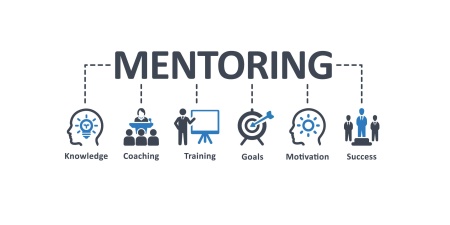Have You Considered AI?
I recently finished a Zoom training session with a distributor sales rep. As I started the Zoom, I received notice of a software update. I was asked if I wanted to add Artificial Intelligence (AI) to the session. When I accepted, I had no idea of what was going to happen. At the end of the training session, I received a pleasant surprise. Zoom AI had captured, classified, and cleaned our entire interaction. The results were amazing. I forwarded them to the trainee and the distributor owner. The trainee was able to review our session. The distributor owner received assurance of its value and I received pertinent information for the book I am writing on the subject of training.
In the same week, I had a similar software update from Prezi. I use Prezi to produce slides for my various training, writing, and speaking applications. My digital marketing specialist and I can’t wait to see the impact AI will have on enhancing those presentations.
These are just two instances that illustrate how AI applications are rapidly infiltrating all kinds of market spaces. McKinsey has declared that “AI is poised to disrupt marketing and sales in every sector.” They predict that generative AI could increase marketing productivity by 5% to 15% across a range of applications. These include personalized content creation at scale, enhanced customer engagement, more robust customer and data insights, improved lead identification, and development (“AI-powered marketing and sales reach new heights with generative AI, Richelle Deveau,” Sonia Joseph Griffin, and Steve Reis, McKinsey & Company, May 11, 2023, mckinsey.com/ai-powered-marketing-and-sales).
Data Management
To make effective use of AI for your business, you need to understand the role that good data management plays in its application. In a recent Forbes article on this topic, Simon Jelly (“Garbage In, Garbage Out: The Role of Data Management in Effective AI,” Simon Jelley, Forbes Business Council, Nov. 16, 2023, forbes.com/garbage-in-garbage-out), explains: “Yes, you can use platforms such as OpenAI’s ChatGPT and Google’s Bard to write a marketing email or improve your product descriptions without worrying about how your data management practices affect these tools’ output. But that’s not true when your organization takes the next step on its AI journey and begins using AI-driven tools for things like autonomous customer support, supply chain optimization, and cyber resiliency (i.e., identifying and preventing cybercrime such as ransomware).” Data is the basis of AI and drives its application. Its accuracy impacts the tool’s effectiveness, making the need for good data management imperative.
Understanding the Terms
It is important to understand the terms that set AI apart from other technology. Jelley writes that autonomy is not the same thing as automation. He states: “Autonomy is self-sufficient and requires no human intervention; it can learn and adjust to dynamic environments and evolve as the environment around it changes. Automation, on the other hand, is narrowly focused on a specific task based on well-defined criteria and restricted to certain tasks it can perform.” AI is an autonomous tool, whereas a robot is an automation tool.
Application to the Distribution Industry
As a distributor, AI will have certain applications that work best for you. Consider the following reasons for deploying AI.
Capture, classify and clean data – Distributors collect a myriad of valuable customer, internal, and vendor information in the process of doing business. AI can generate outputs based on that internal data whether it is stored in the cloud or on-premises. If that data isn’t properly managed, your AI-driven business processes might suffer the consequences. According to Simon Jelley, only 23% of your collected data will be “good” data.
Jelley suggests that after you have captured the relevant data, you classify it. There are 3 key steps to this:
- Create the sets of definitions, labels, and groups you will use to organize your data.
- Apply that taxonomy to your data.
- Establish a single source of truth (SSOT) location for each category of your data.
Once classified, clean your data to rid it of the ROT (redundant, obsolete, or trivial). Redundant data can give AI the impression that something is more important than it is because it’s repeated. Once AI has clean data, it will help keep it clean.
Lower the cost of doing business – One of the greatest advantages of deploying AI is the effective cost containments it yields. Reflect on these considerations:
Inventory levels – As customers, distributors, and suppliers go through economic cycles, consider their effects. Disruptions can wreak havoc on inventory levels. Predictive analytics can make stocking levels a concern of the past. With AI, your trading partners can enjoy the continuous improvement (CI) of just in time (JIT) supply from manufacturer to end user.
Transportation costs – I worked in the welding and gas distribution segment where transportation costs are a significant factor. In one project — pre-AI — we evaluated how to reduce rolling return stock on cylinder trucks. We estimated customer cylinder usage before the trucks left in the morning. Despite our best efforts, some trucks returned with 40% of the cylinders unused. The cost of loading, unloading, and carrying these unused cylinders was staggering. Today, with the use of telemetry systems (the process of recording and transmitting the readings of an instrument), vendor managed inventory (VMI), and order history, a lot of data is generated. With this information, AI can be used to improve the proper frequency and loading quantities of product on trucks. In the welding and gas industry, this includes hard goods, gas cylinders, and bulk cryogenic gas deliveries.
Pricing optimization – As a vice president of sales for a distributorship, one of my chief responsibilities was customer pricing. The arduous task of determining annual price increases was performed by reviewing spreadsheets and bulky print outs with each sales manager. This was done one territory at a time. Today, interactive AI can be used to sort that data and determine the right price for each customer. AI software providers boast that they can increase their distributor customer’s returns 10X to 30X with price optimization programing. Given those results, distributors should focus on adding pricing optimization software to their ERP.
Warehouse automation – One of the best ways distributors can realize cost improvement is by improving material handling processes in the warehouse. Robotic Process Automation (RPA) is already revolutionizing warehouse labor cost and can improve working conditions. With robotic automation, AI autonomy uses data to continually improve handling processes in the warehouse.
Support sales team effectiveness – You will always need salespeople to add value to the customer experience (CX). They bring knowledge and experience to the deal. With the right AI applications, your best salespeople become even better. AI is most effective in sales when it’s treated like an aid as opposed to a replacement for key human practices. AI is a script. Use data to make your sales reps better prepared to create a more effective customer experience. AI helps salespeople provide the right product for each customer. It also can create business efficiencies for the customer. AI can analyze consumers’ shopping habits, preferences, and behaviors and provide reps with customized client recommendations.
Incorporating AI in your business does require salespeople to create new habits. Every day-to-day activity that AI streamlines will change the flow of the sales reps’ process. These transitions are eased when you focus on the success of AI applications in terms of increased sales.
Creating a new marketing approach
AI is changing how marketing is done and is doing it fast. A recent article in Fortune, describes how Wharton School professor Ethan Mollick experimented with how much AI could do for him on a single, 30 minute project. AI, “did market research, created a positioning document, wrote an email campaign, created a website, created a logo and a ‘hero shot’ graphic, made a social media campaign for multiple platforms, and scripted and created a video (“A Wharton professor gave AI tools 30 minutes to work on a business project. The results were ‘superhuman’,” Steve Mollman, Fortune, March 26, 2023, fortune.com/2023/03/26/wharton-professor-ai-tools). Professor Mollick’s experiment results represent a sea-change in how marketing can be done with AI.
A Change in Culture
Distribution marketing leaders have been slow to adopt AI. That needs to change. It’s time for distributors to embrace the marketing advantages AI offers to keep them competitive with the other supply chain verticals. Their success will hinge on clear understanding, conscious experimentation, and careful consideration of AI’s many applications.
Change must start at the top. AI is a business transformation process. Be sure C level team members are on board and that employees don’t feel devalued. Business author Patrick Lencioni suggests, “If you could get the people in the organization rowing in the same direction, you could dominate any industry, in any market, against any competition, at any time,” (mindtools.com/lencionis-five-dysfunctions-of-a-team). Start rowing with AI.
The traditional distributor landscape is changing rapidly. The worst thing you can be is stagnant. AI presents an opportunity for continuous improvement. Use it as a tool to build your future success.









